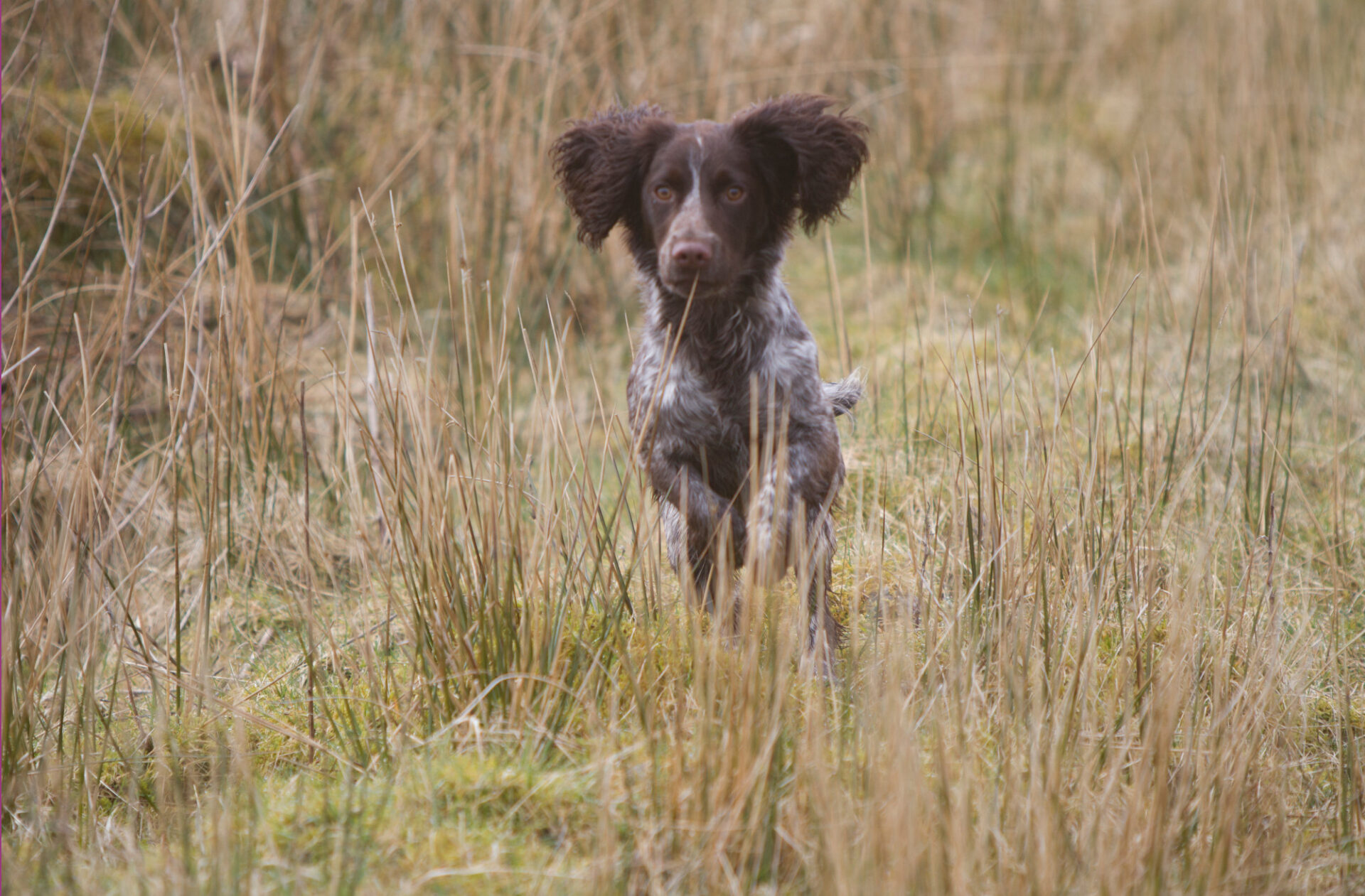current compaigns
Help the endangered species today
Ruppells Griffon Vulture
HARRY
Rüppell’s vulture populations are experiencing declining populations throughout their entire range. These declines can be attributed to loss of habitat related to human-related land use, poisoning, human use for medicine or meat, loss of nesting sites, and declining availability of food sources. Poisoning is currently thought to be the most serious threat to all vulture populations in Africa, although they are not usually the intended target. In events where predators such as lions or hyenas have killed livestock, carbofuran poisons have been placed into carcasses as retaliation against the predators. Vultures utilize carrion as their main food source, and one carcass has the potential to attract hundreds of birds to feed because this species identifies food by sight. One evaluation of 10 poisoning events found that each event caused the death of 37 to 600 individuals.
The griffon vulture is 93–122 cm (37–48 in) long with a 2.3–2.8 m (7.5–9.2 ft) wingspan. In the nominate race the males weigh 6.2 to 10.5 kg (14 to 23 lb) and females typically weigh 6.5 to 10.5 kg (14 to 23 lb), while in the Indian subspecies (G. f. fulvescens), the vultures average 7.1 kg (16 lb). Extreme adult weights have been reported from 4.5 to 15 kg (9.9 to 33.1 lb), the latter likely a weight attained in captivity. Hatched naked, it is a typical Old World vulture in appearance, with a very white head, very broad wings and short tail feathers. It has a white neck ruff and yellow bill. The buff body and wing coverts contrast with the dark flight feathers.


Bald Egale
OREGAN
The bald eagle (Haliaeetus leucocephalus) is a bird of prey found in North America. A sea eagle, it has two known subspecies and forms a species pair with the white-tailed eagle (Haliaeetus albicilla), which occupies the same niche as the bald eagle in the Palearctic. Its range includes most of Canada and Alaska, all of the contiguous United States, and northern Mexico. It is found near large bodies of open water with an abundant food supply and old-growth trees for nesting.
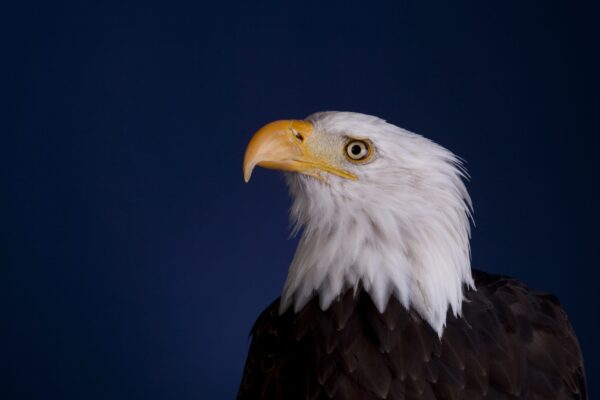

Saker Falcon
RUPERT
The bald eagle (Haliaeetus leucocephalus) is a bird of prey found in North America. A sea eagle, it has two known subspecies and forms a species pair with the white-tailed eagle (Haliaeetus albicilla), which occupies the same niche as the bald eagle in the Palearctic. Its range includes most of Canada and Alaska, all of the contiguous United States, and northern Mexico. It is found near large bodies of open water with an abundant food supply and old-growth trees for nesting.

Black-Chested Buzzard Eagles
TAKORA
The black-chested buzzard-eagle (Geranoaetus melanoleucus) is a bird of prey of the hawk and eagle family (Accipitridae). It lives in open regions of South America. This species is also known as the black buzzard-eagle, grey buzzard-eagle or analogously with “eagle” or “eagle-buzzard” replacing “buzzard-eagle”, or as the Chilean blue eagle. It is sometimes placed in the genus Buteo.
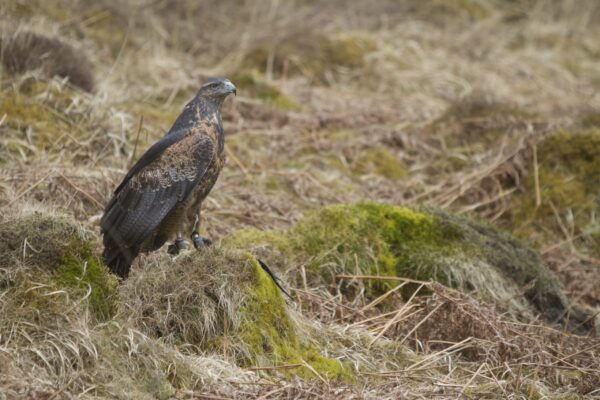

Tawny Owl
WILLOW
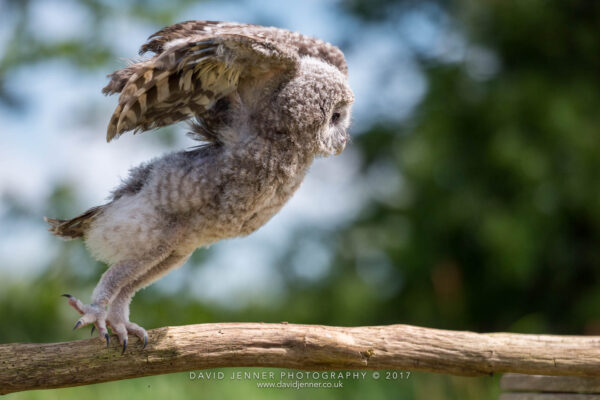

Harris’s Hawk
TRACEY
The African harrier-hawk is a medium-sized raptor. The upperparts, head and breast are pale grey. The belly is white with fine dark barring. The broad wings are pale grey with a black trailing edge fringed with a narrow white line. The tail is black with a single broad white band. There is a bare facial patch of variable colour, usually red or yellow. Genders are similar, but young birds have pale brown instead of grey, and dark brown replacing black. An unusual trait of this species is the double-jointed knees it possesses, which enable it to reach into otherwise inaccessible holes and cracks for prey. A comparable leg-structure and behaviour can be found in the Neotropical crane hawk as well as the extinct Australian Pengana; a case of convergent evolution.
This medium-large hawk is roughly intermediate in size between a peregrine falcon (Falco peregrinus) and a red-tailed hawk (Buteo jamaicensis). Harris’s hawks range in length from 46 to 59 cm (18 to 23 in) and generally have a wingspan of about 103 to 120 cm (41 to 47 in) These hawks have a brownish plumage, reddish shoulders and tail feathers with a white base and white tip.
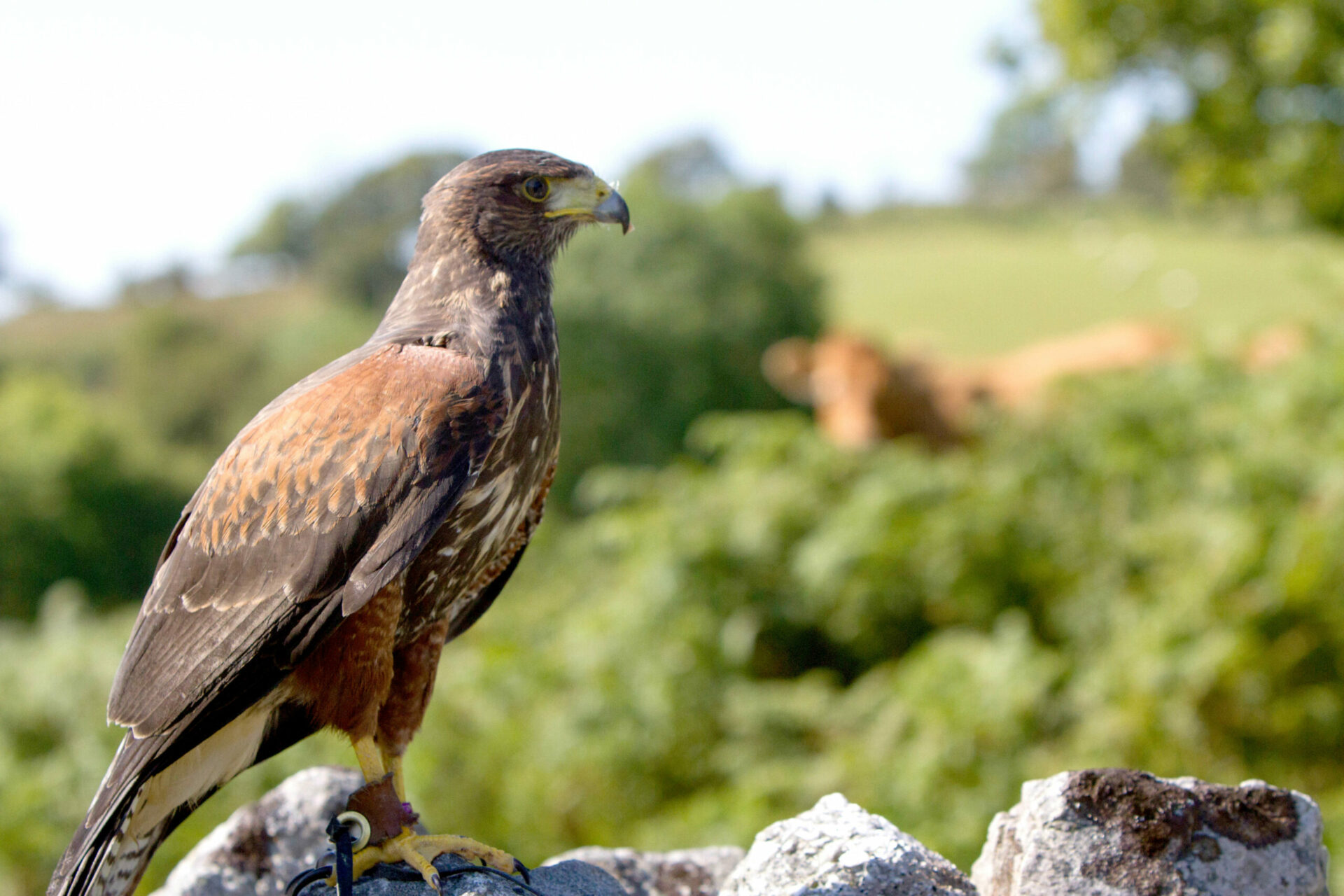

White Tailed Egale
FLORENCE
The white-tailed eagle (Haliaeetus albicilla) is a very large species of sea eagle widely distributed across temperate Eurasia. Like all eagles, it is a member of the family Accipitridae (or accipitrids) which includes other diurnal raptors such as hawks, kites, and harriers. One of up to eleven members in the genus Haliaeetus, which are commonly called sea eagles, it is also referred to as the white-tailed sea-eagle. Sometimes, it is known as the ern or erne (depending on spelling by sources), gray sea eagle and Eurasian sea eagle.

Southern Boobook
CHOPPER
The Australian boobook (Ninox boobook), which is known in some regions as the mopoke, is a species of owl native to mainland Australia, southern New Guinea, the island of Timor, and the Sunda Islands. Described by John Latham in 1801, it was generally considered to be the same species as the morepork of New Zealand until 1999. Its name is derived from its two-tone boo-book call. Eight subspecies of the Australian boobook are recognized, with three further subspecies being reclassified as separate species in 2019 due to their distinctive calls and genetics.
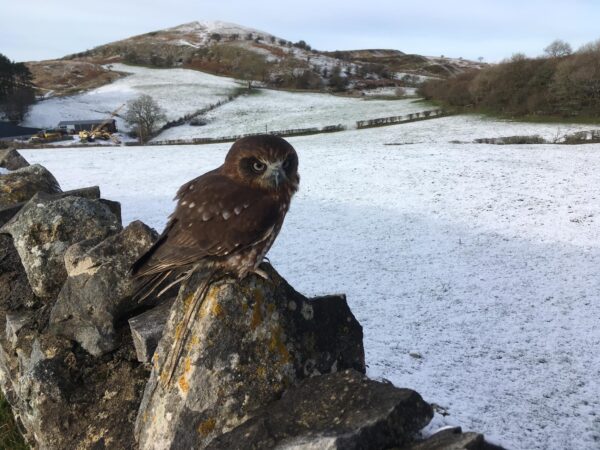

African Harrier Hawk
TWIZZLE
Twizzle was a wonderful addition to the team in 2022, a nightmare to understand and train, but now amazing to work with, enjoyable for the public to see and very funny to watch at times.
The African harrier-hawk is a medium-sized raptor. The upper parts, head and breast are pale grey. The belly is white with fine dark barring. The broad wings are pale grey with a black trailing edge fringed with a narrow white line. The tail is black with a single broad white band. There is a bare facial patch of variable colour, usually red or yellow.

griffon vulture
JASMINE
The griffon vulture is 93–122 cm (37–48 in) long with a 2.3–2.8 m (7.5–9.2 ft) wingspan. In the nominate race the males weigh 6.2 to 10.5 kg (14 to 23 lb) and females typically weigh 6.5 to 10.5 kg (14 to 23 lb), while in the Indian subspecies (G. f. fulvescens), the vultures average 7.1 kg (16 lb). Extreme adult weights have been reported from 4.5 to 15 kg (9.9 to 33.1 lb), the latter likely a weight attained in captivity. Hatched naked, it is a typical Old World vulture in appearance, with a very white head, very broad wings and short tail feathers. It has a white neck ruff and yellow bill. The buff body and wing coverts contrast with the dark flight feathers.


Barn Owls
BERT
The barn owl (Tyto alba) is the most widely distributed species of owl in the world and one of the most widespread of all species of birds, being found almost everywhere in the world except for the polar and desert regions, Asia north of the Himalayas, most of Indonesia, and some Pacific Islands. It is also known as the common barn owl, to distinguish it from the other species in its family, Tytonidae, which forms one of the two main lineages of living owls, the other being the typical owls (Strigidae).


Dog
DARCY
